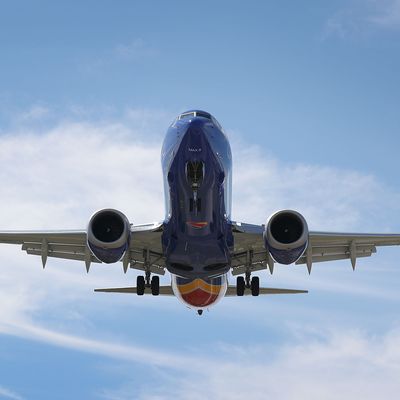
As investigators determine if the Boeing 737 MAX’s flight control system caused the crashes of the Lion Air flight in October 2018 and Ethiopian Airlines Flight 302 last week, a new report states that the Federal Aviation Administration hurried along the plane’s approval process, allowing Boeing to tackle key aspects of the regulation procedure themselves.
According to the Seattle Times, the FAA has made a habit of delegating parts of the regulation process to Boeing due to cuts in funding. For the 737 MAX, FAA managers reportedly pressured the agency’s safety engineers to hand over safety assessments to Boeing itself, and to green-light the company’s findings. Remarkably, the paper was working on the report prior to the crash of the Ethiopian Airlines flight, which killed all 157 occupants onboard: “Both Boeing and the FAA were informed of the specifics of this story and were asked for responses 11 days ago, before the second crash of a 737 MAX last Sunday.”
In 2015, Boeing reportedly pushed to expedite the 737 MAX’s approval in order to compete with the comparable Airbus A320neo, which had hit the market nine months ahead of Boeing’s newest 737 model. Several FAA employees told the Seattle Times that their managers asked them to hurry up the process, and hand over more work to Boeing. “There was constant pressure to reevaluate our initial decisions,” said one former FAA safety engineer. “Review was rushed to reach certain certification dates.”
Much of Boeing’s self-certification concerned the 737 MAX’s flight control program, the Maneuvering Characteristics Augmentation System (MCAS). The FAA reportedly allowed Boeing to handle the safety analysis on the MCAS, and the report the company handed over — which certified the plane as flight-ready — had several flaws.
According to the Seattle Times, the safety assessments “understated the power of the [MCAS],” which could move the plane’s tail “four times farther than was stated in the initial safety analysis.” The extra power was necessary because the MAX’s large engines were placed farther forward on the wing. However, the system “failed to account” for how it could “reset itself each time a pilot responded.” On the Lion Air flight, black-box data suggests that each time the captain pulled the plane’s nose up, the “MCAS kicked in … to push the nose down again,” causing the plane to crash into the Java Sea 12 minutes after takeoff.
To help get the 737 MAX into the air more quickly, Boeing reportedly decided that its pilots would not need a full round of training on the MCAS system. According to the Seattle Times, it wasn’t even mentioned in their flight manuals. Dennis Tajer, a spokesperson for the Allied Pilots Association at American Airlines, told the paper that his training on the 737 MAX was made up of a one-hour session on an iPad that did not have simulator training. By cutting down on pilot instruction, Boeing was able to cut significant costs for the airlines that bought the plane. The Boeing site promised prospective buyers that “as you build your 737 MAX fleet, millions of dollars will be saved because of its commonality” with the prior 737 generation.
With the 737 MAX grounded by the FAA, its own safety engineers believe that the agency must rework the delegation process that allowed Boeing to self-regulate the development of its own plane. “We need to make sure the FAA is much more engaged in failure assessments and the assumptions that go into them,” an FAA safety engineer told the Seattle Times. Meanwhile, the FAA has required Boeing to overhaul the MCAS software “no later than April.”






























